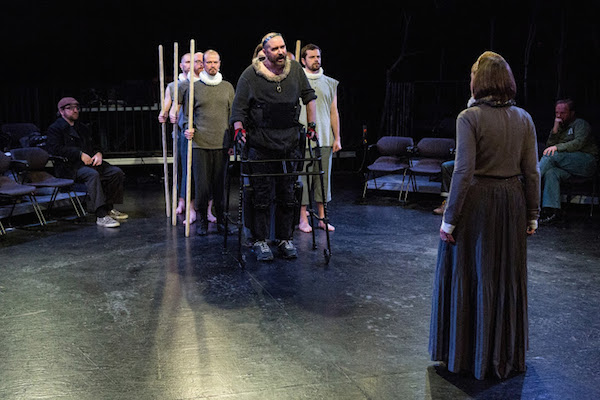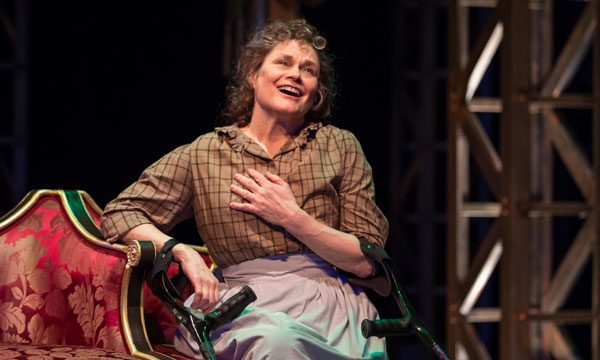Actor Anita Hollander will never forget the first time she was told she had no business being on stage. “This was more than 25 years ago and I had just had a great audition,” recalls Hollander, now 60. “The casting director looked up, sighed, and said, ‘It’s a shame you’re so talented.’ He didn’t have to finish the sentence—I already knew it. It’s a shame you’re so talented because you only have one leg and you’re completely un-castable.”
Hollander’s memory illustrates a cruel paradox. Off-stage, those with disabilities are gawked at, while on-stage, they’re mostly invisible. This month, two major productions are changing that narrative: the Goodman Theatre’s The Matchmaker, in which Hollander plays three supporting roles, and the Gift Theatre’s Richard III, starring Michael Patrick Thornton, who is paraplegic, as the scheming, ambitious king.
Hollander's left leg was amputated at 26, when she was diagnosed with cancer. Removing her leg saved the young actor’s life, but it presented a new set of challenges. “Casting directors actively ignored me,” she says. But The Matchmaker director Henry Wishcamper was captivated by Hollander, who moves from a wheelchair to a prosthetic leg to crutches in the show. “When I heard her sing, I was just—wow,” he says, adding, “Full diversity is a key to the vitality and dynamism of American theater, film, and television.”
Talent was also the driving factor in director Jessica Thebus's decision build her new production of Richard III around actor Michael Patrick Thornton. A survivor of two spinal strokes that paralyzed him from the neck down, Thornton brings a particular vigor to the disabled king who fights for the throne to ensure a place in English history.
In Thebus's production, Thornton begins on stage, spinning around like a spider weaving a web, later transitioning to a walker while wooing Lady Anne (played by Olivia Cygan), and eventually moving to a ReWalk, a $70,000 robotic exoskeleton that allows Thornton to stand—tower—and walk when Richard III is crowned king. The three transitions, says Thebus, perfectly parallel Shakespeare’s language. “When Richard says, ‘I can add colors to the chameleon, change shapes with Proteus,’ he’s talking about his ability to lie and dissemble, but he’s also talking about his body.” The production redefines the traditional theatrical portrait of Shakespeare's villainous, power-hungry king.

For Thornton, Richard’s evolution also sheds light on an audience’s perception of disabled actors. “I get up and I walk, and everybody claps,” he says. “On the one hand, it makes me proud. I busted my ass to be able to do that. But on the other hand, is it ableism? Are people clapping because I’m standing up, and that’s much better than being in a wheelchair? What if I couldn’t stand? Does that make me less worthy of applause?”
But perhaps producing plays that, at the very least, pose the question is a step in the right direction. “I saw a show a while ago where someone was using a walker, pretending to be elderly. And I just thought that was weird," says Thebus. “Not that it’s necessarily wrong, but why wouldn’t you seek out an actor who actually used a walker? Why would you want someone who had to pretend?”
Richard III runs through May 1 at the Steppenwolf Garage, 1624 N. Halsted St. gifttheatre.org. Matchmaker runs through April 10 at the Goodman Theatre, 170 N. Dearborn St. goodmantheatre.com.



